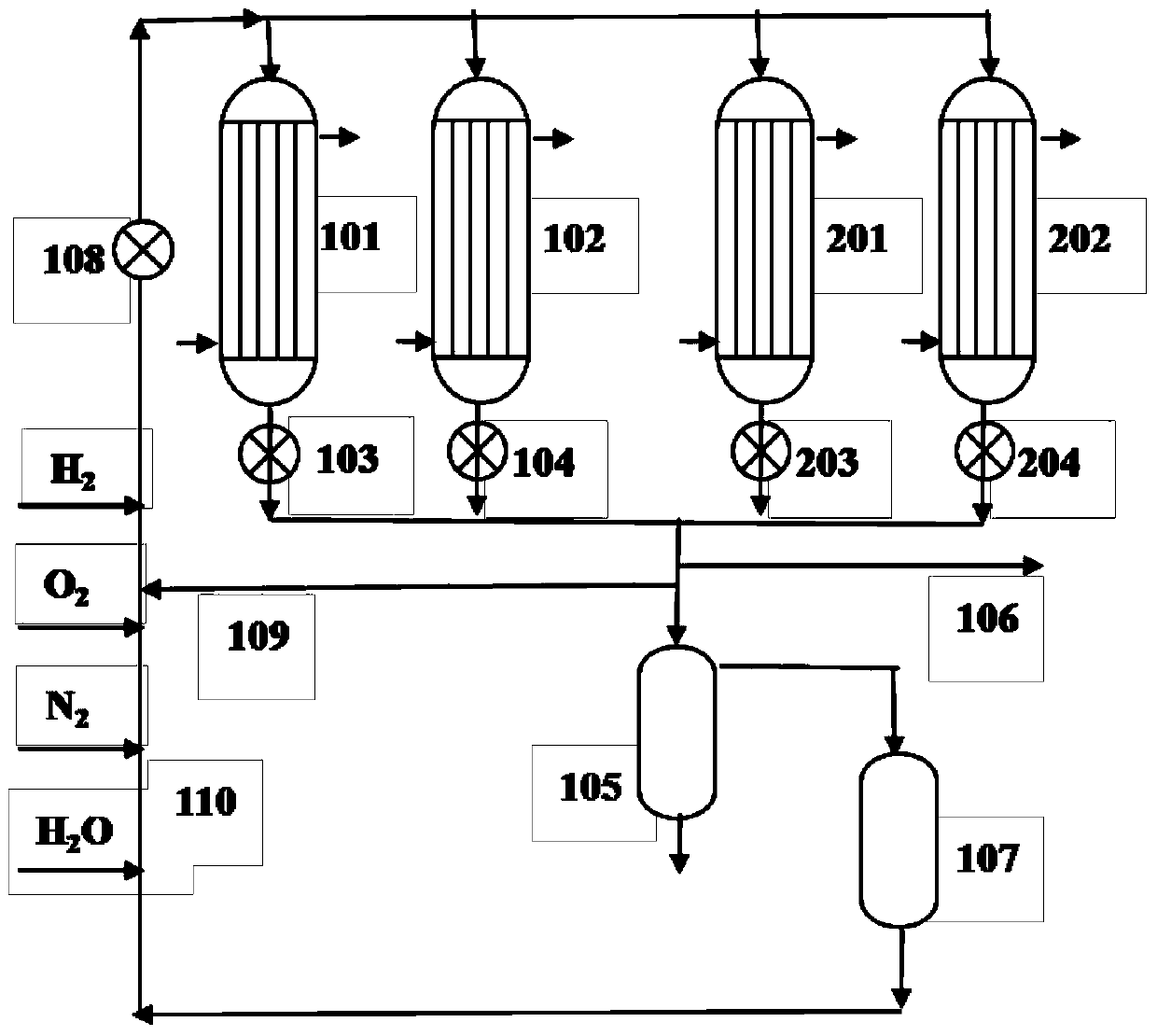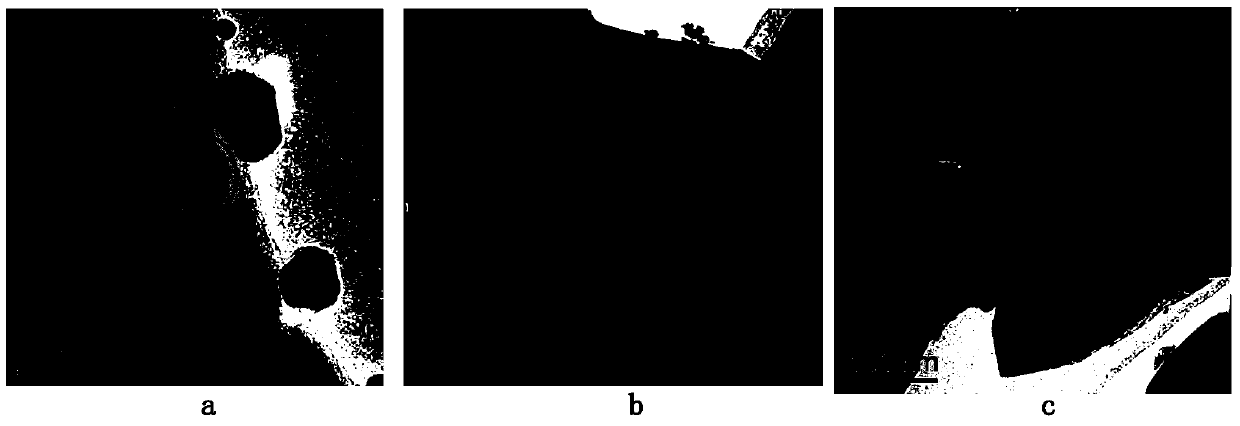Method for regenerating deactivated palladium catalyst on line in process of preparing ethylene glycol through coal
A coal-to-ethylene glycol and palladium catalyst technology, which is applied in the direction of physical/chemical process catalysts, chemical instruments and methods, metal/metal oxide/metal hydroxide catalysts, etc., can solve cumbersome process, low cost, and non-environmental protection and other problems, to achieve the effect of low activation temperature, low cost, and solve the problem of regeneration
- Summary
- Abstract
- Description
- Claims
- Application Information
AI Technical Summary
Problems solved by technology
Method used
Image
Examples
Embodiment 1
[0029] exist figure 1 In the shown coal-to-ethylene glycol plant, the palladium catalysts in the dehydrogenation reactors 101 and 102 and the synthesis reactors 201 and 202 are simultaneously regenerated.
[0030] Before regeneration, close the reaction gas first, stop the operation of the coal-to-ethylene glycol unit, and feed N through the regeneration gas inlet of 110 2 , cool down to room temperature, purge the reactor and the regeneration pipeline, turn on the circulation compressor and the venting device, and control the venting volume at 10%. After 6h, the CO content in the circulating gas is 0.95%, and the gas replacement is completed. Gradually raise the temperature of 101 and 102 to 120°C, gradually raise the temperature of 201 and 202 to 150°C, pass water vapor from 110 to replace N 2 , the venting amount is controlled at 5%, after 3h, the water vapor content in the circulating gas is 70%, and the space velocity is 3000h -1 , Continuous reaction for 20h to remove ...
Embodiment 2
[0035] exist figure 1 In the coal-to-ethylene glycol unit shown, the palladium catalysts in dehydrogenation reactors 101 and 102 are regenerated separately.
[0036] Refer to Example 1 for the gas path control and replacement process of the regeneration process. Before regeneration, first turn off the reaction gas, stop the operation of the coal-to-ethylene glycol unit, and inject N 2 , cool down to room temperature, purge the reactor and the regeneration pipeline, and complete the gas replacement after 3 hours, gradually raise the temperature of 101 and 102 to 130°C, pass in water vapor to remove some organic and inorganic substances attached to the catalyst surface, and the space velocity is 1000h -1 , after continuous reaction for 12h, N 2 Replace the water vapor, then raise the temperature of 101 and 102 to 300°C, and the space velocity is 2000h -1 Constant temperature for 24h, dredge the carrier channel, after that, use O 2 to N 2 Carry out replacement, and raise th...
Embodiment 3
[0038] exist figure 1 In the coal-to-ethylene glycol unit shown, the palladium catalysts in synthesis reactors 201 and 202 are regenerated separately.
[0039] Refer to Example 1 for the gas path control and replacement process of the regeneration process. Before regeneration, first turn off the reaction gas, stop the operation of the coal-to-ethylene glycol unit, and inject N 2 , cool down to room temperature, purge the reactor and the regeneration pipeline, complete the gas replacement after 8 hours, gradually raise the temperature of 201 and 202 to 150°C, pass in water vapor to remove some organic and inorganic substances attached to the surface of the catalyst, and the space velocity is 3000h -1 , after continuous reaction for 20h, N 2 Replace the water vapor, then raise the temperature of 201 and 202 to 350°C, and the space velocity is 4000h -1 Constant temperature for 30h, dredge the carrier channel, after that, use O 2 to N 2 Carry out replacement, and raise the t...
PUM
| Property | Measurement | Unit |
|---|---|---|
| particle diameter | aaaaa | aaaaa |
| particle diameter | aaaaa | aaaaa |
Abstract
Description
Claims
Application Information
 Login to View More
Login to View More - R&D
- Intellectual Property
- Life Sciences
- Materials
- Tech Scout
- Unparalleled Data Quality
- Higher Quality Content
- 60% Fewer Hallucinations
Browse by: Latest US Patents, China's latest patents, Technical Efficacy Thesaurus, Application Domain, Technology Topic, Popular Technical Reports.
© 2025 PatSnap. All rights reserved.Legal|Privacy policy|Modern Slavery Act Transparency Statement|Sitemap|About US| Contact US: help@patsnap.com



